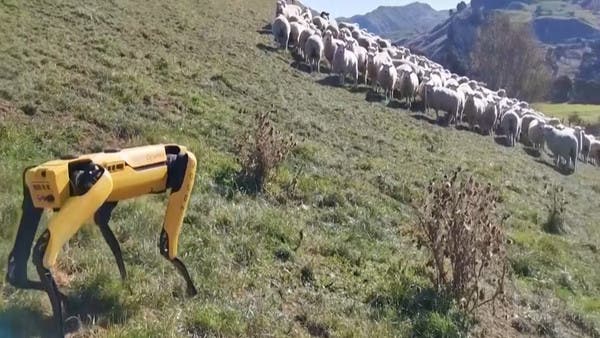A spacecraft rocketing around the sun just beamed back the closest images ever taken of our star

An image from the Solar Orbiter reveals ubiquitous features of the sun's surface: little eruptions called "campfires." Solar Orbiter/EUI Team (ESA & NASA); CSL, IAS, MPS, PMOD/WRC, ROB, UCL/MSSL
The Solar Orbiter spacecraft just beamed back the closest images ever recorded of the sun.
The photos and videos reveal widespread miniature solar flares, which could explain why the sun's outer atmosphere is so much hotter than its inner layers.
Solar Orbiter, a joint effort between NASA and the European Space Agency, is expected to unpack the sun's biggest mysteries over the next two years.
A telescope rocketing around the sun just beamed back the closest images and videos ever recorded of our star.
The Solar Orbiter, built by the European Space Agency (ESA) with help from NASA, flew within 48 million miles (77 million kilometers) of the sun on June 15 — half the distance between the sun and Earth.
That was the closest the Orbiter has gotten to the sun since launching in February. The approach was primarily intended as a chance for the spacecraft to test its instruments — including its cameras — before it begins scientific observation in full.
But already, the orbiter discovered something new: The sun's surface is covered in miniature solar flares — bursts of radiation that make the largest explosions in our solar system. The scientists behind the spacecraft call these widespread flares "campfires."
"These are only the first images and we can already see interesting new phenomena," Daniel Müller, the project science for the ESA's Solar Orbiter team, said in a press release. "We didn't really expect such great results right from the start."
'This is just the beginning'
The Solar Orbiter is slated to take unprecedented measurements of the sun's most mysterious forces over its seven-year lifetime. The mission could get extended to 2030 to collect even more information. The data the probe returns could help scientists pinpoint the origins of space weather and even track eruptions on the sun in near-real time.
The video below shows some of what the Solar Orbiter captured with its imaging instruments during this first approach.
 Solar Orbiter (ESA & NASA)
Solar Orbiter (ESA & NASA)
"We are all really excited about these first images – but this is just the beginning," Müller said. "Solar Orbiter has started a grand tour of the inner solar system, and will get much closer to the sun within less than two years."
The spacecraft follows an oval-shaped trajectory around the sun. All in all, it's set to complete 22 orbits, which will take it past the orbits of Mercury, Venus, and Earth before swinging it around to get its closest looks at the sun.
In future approaches, the telescope will get as close as 26 millions miles (42 million kilometers) to the sun. In 2025, it will harness Venus's gravity to shift its orbit so that it can take the first-ever images of the sun's poles.
'Campfires' everywhere

A high-resolution image from the Extreme Ultraviolet Imager on the Solar Orbiter spacecraft, taken May 30, 2020. The circle in the lower right corner indicates the size of Earth for scale. The arrow points to one of the ubiquitous 'campfires' on the solar surface. Solar Orbiter/EUI Team (ESA & NASA); CSL, IAS, MPS, PMOD/WRC, ROB, UCL/MSSL
Scientists have long known that solar flares exist. Telescopes have recorded images of solar eruptions as far back as 1900.
But they didn't know that the solar surface was covered in them.
"The campfires are little relatives of the solar flares that we can observe from Earth, million or billion times smaller," David Berghmans, who leads the team behind the high-resolution imaging instrument on the spacecraft, said in the release. "The sun might look quiet at the first glance, but when we look in detail, we can see those miniature flares everywhere we look."

An image from the Solar Orbiter reveals the upper atmosphere of the sun, called the corona, and the campfires that cover it. Solar Orbiter/EUI Team (ESA & NASA); CSL, IAS, MPS, PMOD/WRC, ROB, UCL/MSSL
For now, it's unclear whether these new flares are just smaller versions of the eruptions scientists have seen before, or whether they're created by an entirely different mechanism.
But the campfires could offer a clue about one of the sun's biggest mysteries: how its corona stays so hot.
The corona is the upper atmosphere of the sun that extends millions of miles into space. It inexplicably maintains a temperature of about 1 million degrees — far hotter than the inner layers of the star.

An artist's impression of Solar Orbiter observing a large eruption on the sun. ESA/AOES
If the campfires produce a steady hum of explosive activity, which can accelerate particles and release enormous amounts of energy, they could produce much of that heat.
"These campfires are totally insignificant each by themselves, but summing up their effect all over the sun, they might be the dominant contribution to the heating of the solar corona," Frédéric Auchère, who leads the imaging instrument team with Berghmans, said in the release.
What Solar Orbiter will accomplish next
 This animation shows five views of the sun captured with the Extreme Ultraviolet Imager and Polarimetric and Helioseismic Imager instruments on the Solar Orbiter on May 30, 2020. The first two show different regions of the sun's atmosphere, and the last three show the sun's velocity, magnetic properties, and visible light. Solar Orbiter/EUI Team; PHI Team/ESA & NASA
This animation shows five views of the sun captured with the Extreme Ultraviolet Imager and Polarimetric and Helioseismic Imager instruments on the Solar Orbiter on May 30, 2020. The first two show different regions of the sun's atmosphere, and the last three show the sun's velocity, magnetic properties, and visible light. Solar Orbiter/EUI Team; PHI Team/ESA & NASA
One of the Solar Orbiter's primary goals over the next two years is to study solar wind: a stream of electrically charged particles that surges from the sun and washes over the planets. The spacecraft will look for the source of this stream.
The orbiter will reach speeds as fast as the sun's rotation, which will allow it to follow particular spots on the solar surface for an extended period of time. That means it can observe solar flares and storms as they happen.
"What we want to do with Solar Orbiter is to understand how our star creates and controls the constantly changing space environment throughout the solar system," Yannis Zouganelis, an ESA scientist working on the mission, said in January.
"There are still basic mysteries about our star that remain unsolved," he added.



